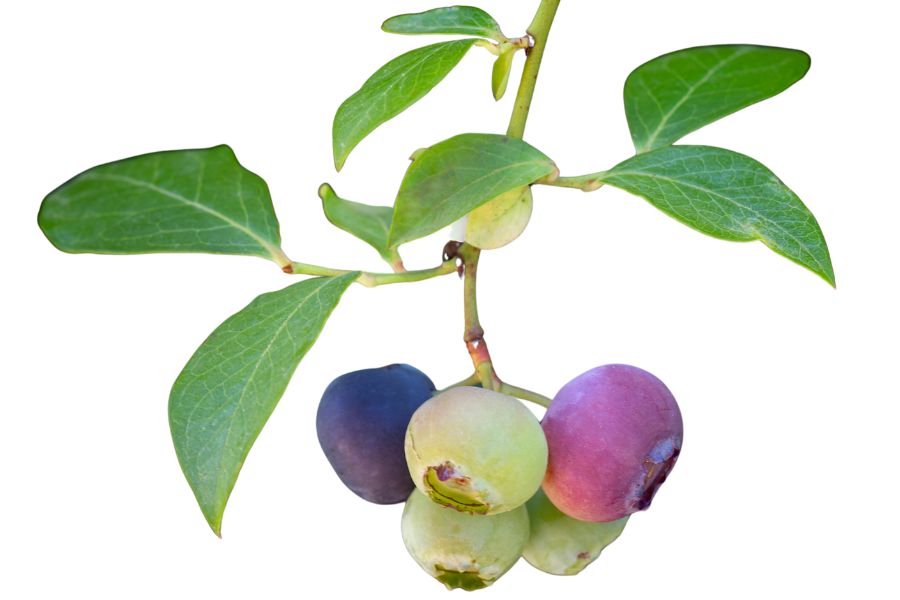Some of the most valuable wild foods in Maryland aren’t growing deep in the woods—they’re often just off the trail. Jerusalem artichokes thrive in open areas and disturbed soils, producing underground tubers that cook up like nutty potatoes.
Not far from them, you might come across a patch of wineberries, their ruby fruit hidden behind thorny canes.
If you know how to identify them, hickory nuts can be worth collecting by the bucketful. Their hard shells protect a sweet, oily meat that stores well and makes a great addition to baked goods. Further into the woods, chicken of the woods mushrooms glow orange on dead trees and fetch a high price at specialty markets.
There’s more growing wild in Maryland than most people realize, and some of it is worth a lot more than just a second glance. The difference between a walk in the woods and a successful foraging trip often comes down to a few key skills.
With a little attention and the right timing, it’s possible to come home with a range of wild foods that would cost you dearly at a grocery store.
What We Cover In This Article:
- What Makes Foreageables Valuable
- Foraging Mistakes That Cost You Big Bucks
- The Most Valuable Forageables in the State
- Where to Find Valuable Forageables in the State
- When to Forage for Maximum Value
- The extensive local experience and understanding of our team
- Input from multiple local foragers and foraging groups
- The accessibility of the various locations
- Safety and potential hazards when collecting
- Private and public locations
- A desire to include locations for both experienced foragers and those who are just starting out
Using these weights we think we’ve put together the best list out there for just about any forager to be successful!
A Quick Reminder
Before we get into the specifics about where and how to find these plants and mushrooms, we want to be clear that before ingesting any wild plant or mushroom, it should be identified with 100% certainty as edible by someone qualified and experienced in mushroom and plant identification, such as a professional mycologist or an expert forager. Misidentification can lead to serious illness or death.
All plants and mushrooms have the potential to cause severe adverse reactions in certain individuals, even death. If you are consuming wild foragables, it is crucial to cook them thoroughly and properly and only eat a small portion to test for personal tolerance. Some people may have allergies or sensitivities to specific mushrooms and plants, even if they are considered safe for others.
The information provided in this article is for general informational and educational purposes only. Foraging involves inherent risks.
What Makes Foreageables Valuable
Some wild plants, mushrooms, and natural ingredients can be surprisingly valuable. Whether you’re selling them or using them at home, their worth often comes down to a few key things:
The Scarcer the Plant, the Higher the Demand
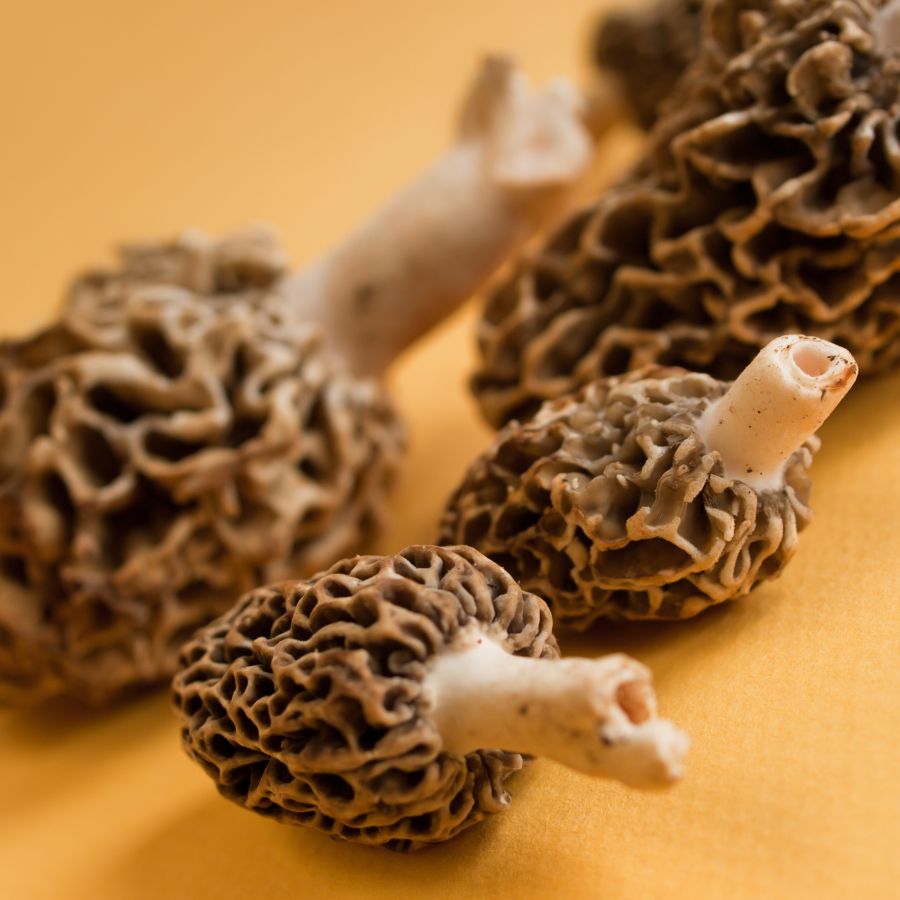
Some valuable forageables only show up for a short time each year, grow in hard-to-reach areas, or are very difficult to cultivate. That kind of rarity makes them harder to find and more expensive to buy.
Morels, truffles, and ramps are all good examples of this. They’re popular, but limited access and short growing seasons mean people are often willing to pay more.
A good seasonal foods guide can help you keep track of when high-value items appear.
High-End Dishes Boost the Value of Ingredients
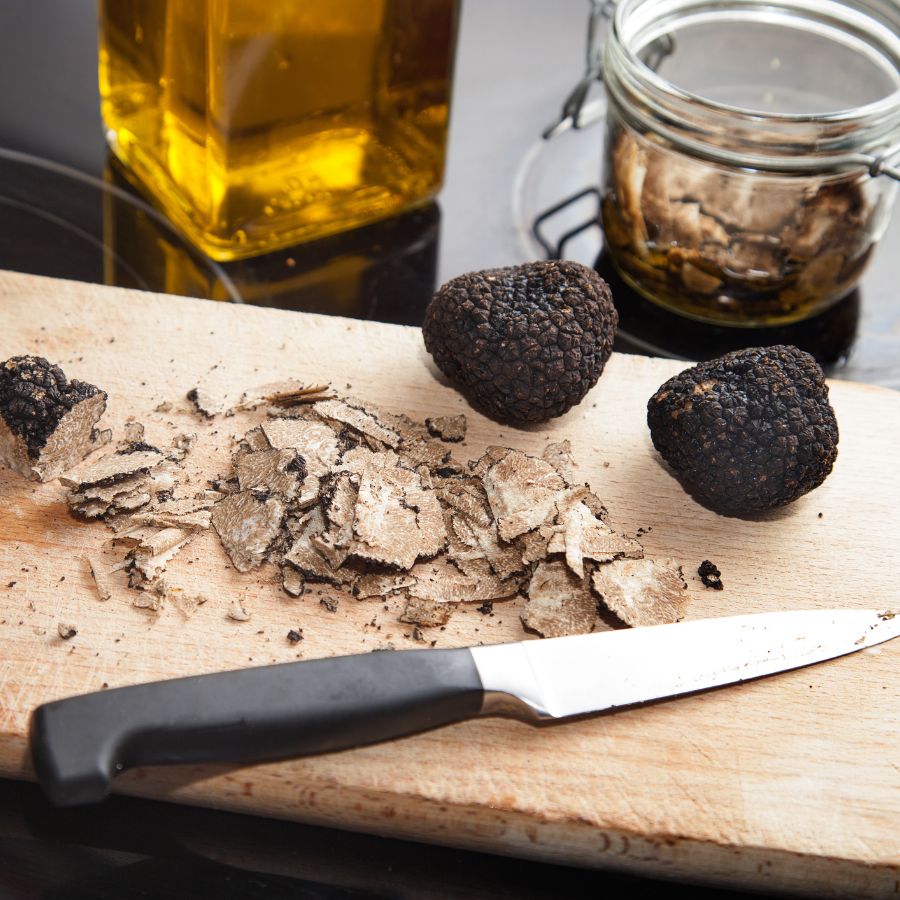
Wild ingredients that are hard to find in stores often catch the attention of chefs and home cooks. When something unique adds flavor or flair to a dish, it quickly becomes more valuable.
Truffles, wild leeks, and edible flowers are prized for how they taste and look on a plate. As more people try to include them in special meals, the demand—and the price—tends to rise.
You’ll find many of these among easy-to-identify wild mushrooms or herbs featured in fine dining.
Medicinal and Practical Uses Drive Forageable Prices Up
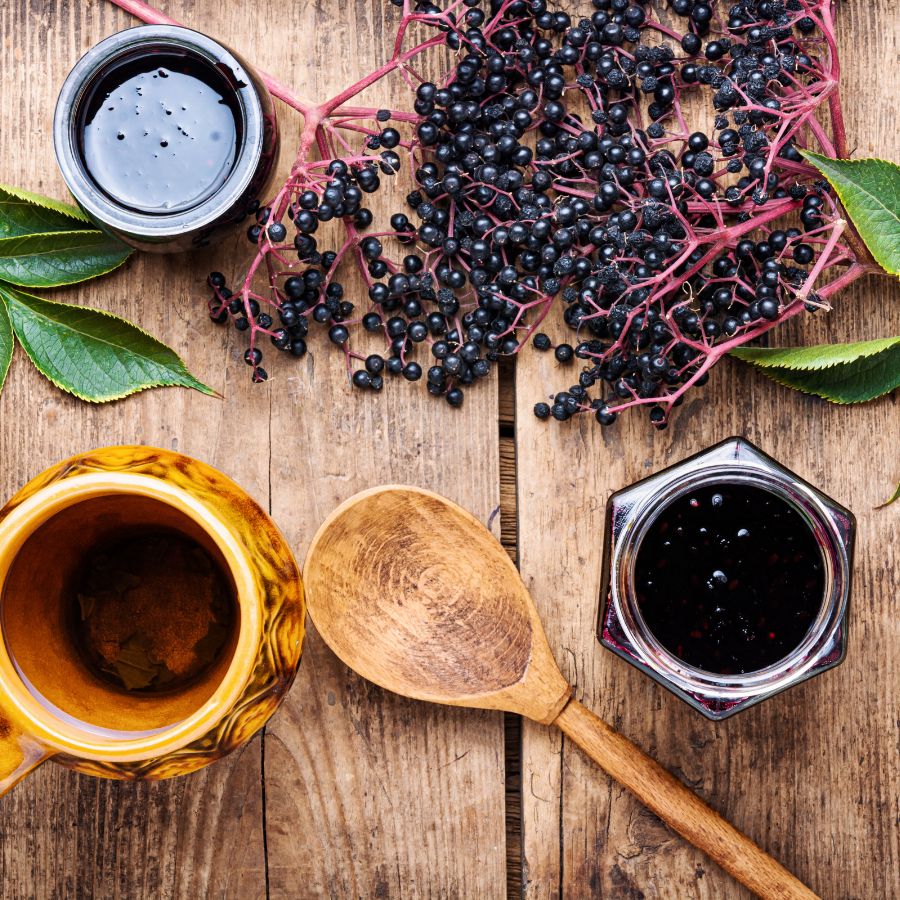
Plants like ginseng, goldenseal, and elderberries are often used in teas, tinctures, and home remedies. Their value comes from how they support wellness and are used repeatedly over time.
These plants are not just ingredients for cooking. Because people turn to them for ongoing use, the demand stays steady and the price stays high.
The More Work It Takes to Harvest, the More It’s Worth
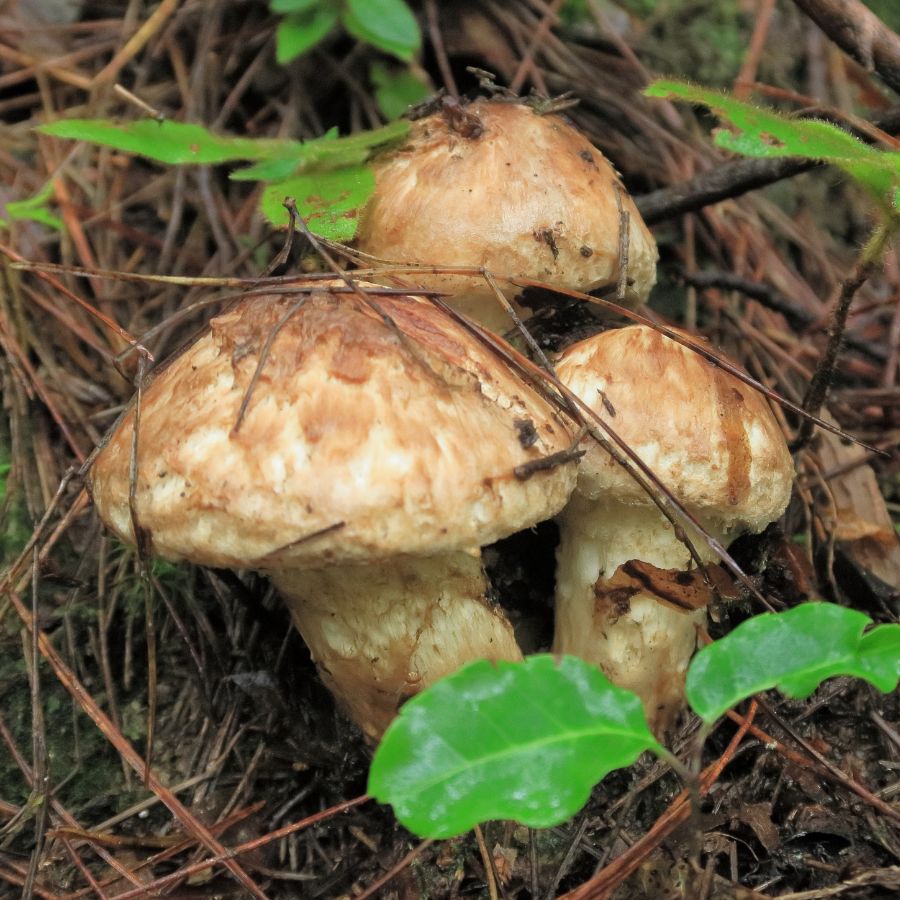
Forageables that are hard to reach or tricky to harvest often end up being more valuable. Some grow in dense forests, need careful digging, or have to be cleaned and prepared before use.
Matsutake mushrooms are a good example, because they grow in specific forest conditions and are hard to spot under layers of leaf litter. Wild ginger and black walnuts, meanwhile, both require extra steps for cleaning and preparation before they can be used or sold.
All of that takes time, effort, and experience. When something takes real work to gather safely, buyers are usually willing to pay more for it.
Foods That Keep Well Are More Valuable to Buyers
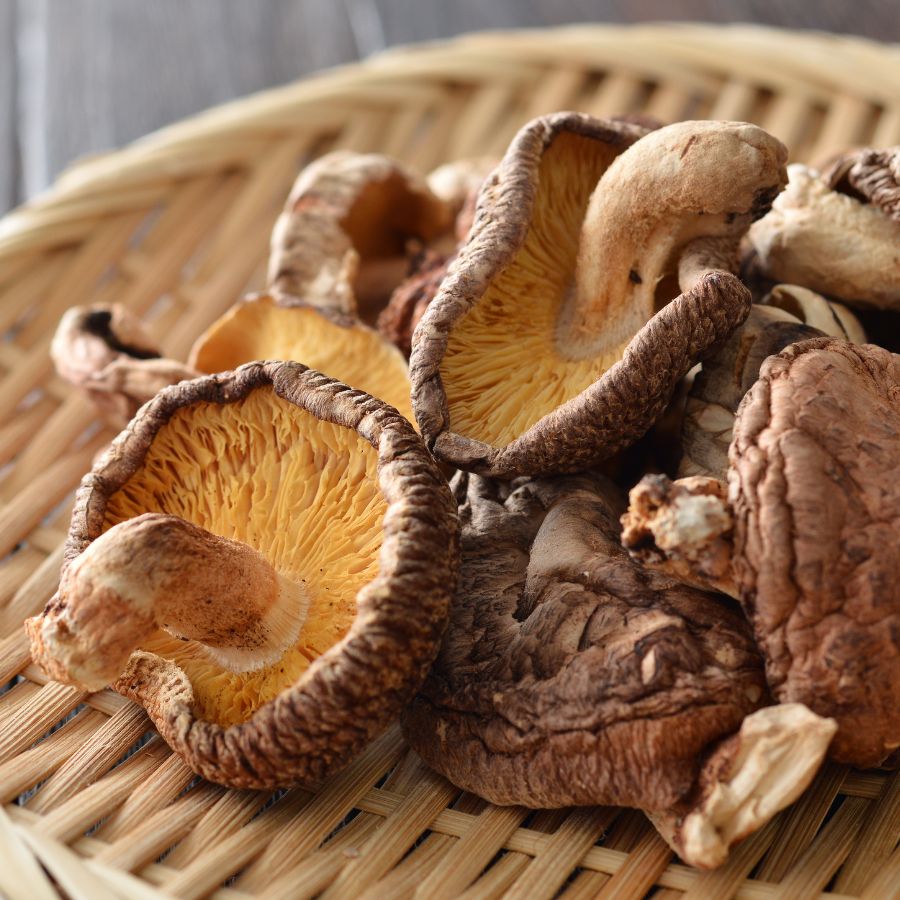
Some forageables, like dried morels or elderberries, can be stored for months without losing their value. These longer-lasting items are easier to sell and often bring in more money over time.
Others, like wild greens or edible flowers, have a short shelf life and need to be used quickly. Many easy-to-identify wild greens and herbs are best when fresh, but can be dried or preserved to extend their usefulness.
A Quick Reminder
Before we get into the specifics about where and how to find these mushrooms, we want to be clear that before ingesting any wild mushroom, it should be identified with 100% certainty as edible by someone qualified and experienced in mushroom identification, such as a professional mycologist or an expert forager. Misidentification of mushrooms can lead to serious illness or death.
All mushrooms have the potential to cause severe adverse reactions in certain individuals, even death. If you are consuming mushrooms, it is crucial to cook them thoroughly and properly and only eat a small portion to test for personal tolerance. Some people may have allergies or sensitivities to specific mushrooms, even if they are considered safe for others.
The information provided in this article is for general informational and educational purposes only. Foraging for wild mushrooms involves inherent risks.
Foraging Mistakes That Cost You Big Bucks
When you’re foraging for high-value plants, mushrooms, or other wild ingredients, every decision matters. Whether you’re selling at a farmers market or stocking your own pantry, simple mistakes can make your harvest less valuable or even completely worthless.
Harvesting at the Wrong Time
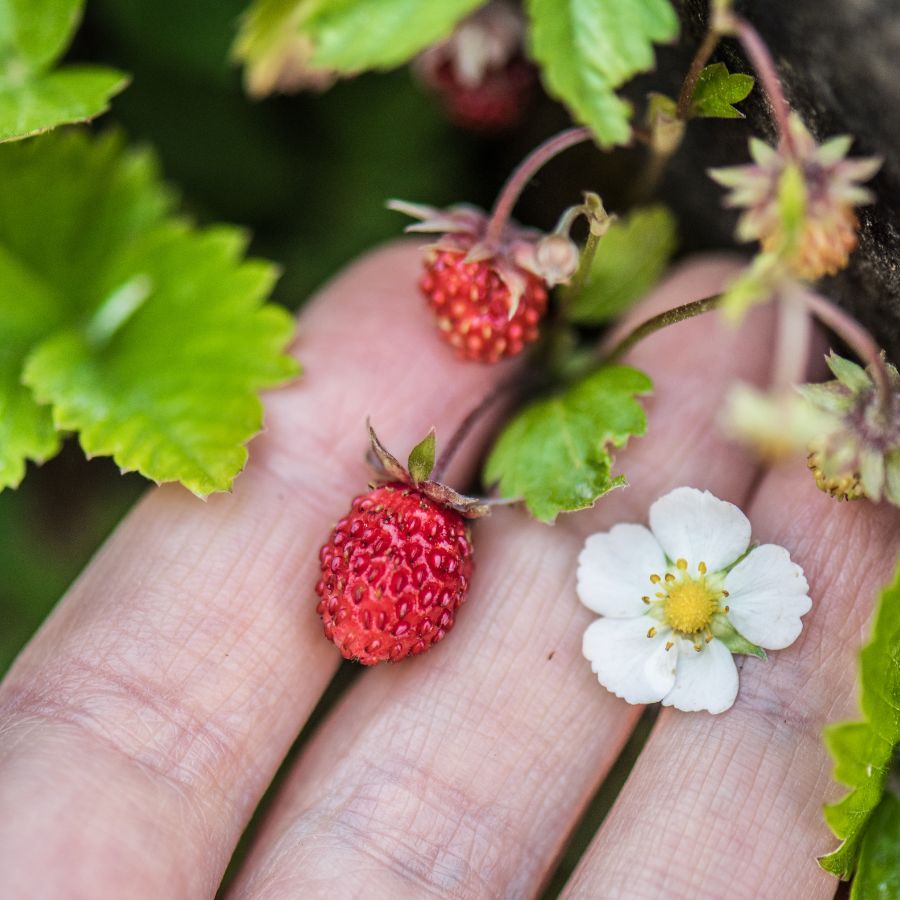
Harvesting at the wrong time can turn a valuable find into something no one wants. Plants and mushrooms have a short window when they’re at their best, and missing it means losing quality.
Morels, for example, shrink and dry out quickly once they mature, which lowers their weight and price. Overripe berries bruise in the basket and spoil fast, making them hard to store or sell.
Improper Handling After Harvest
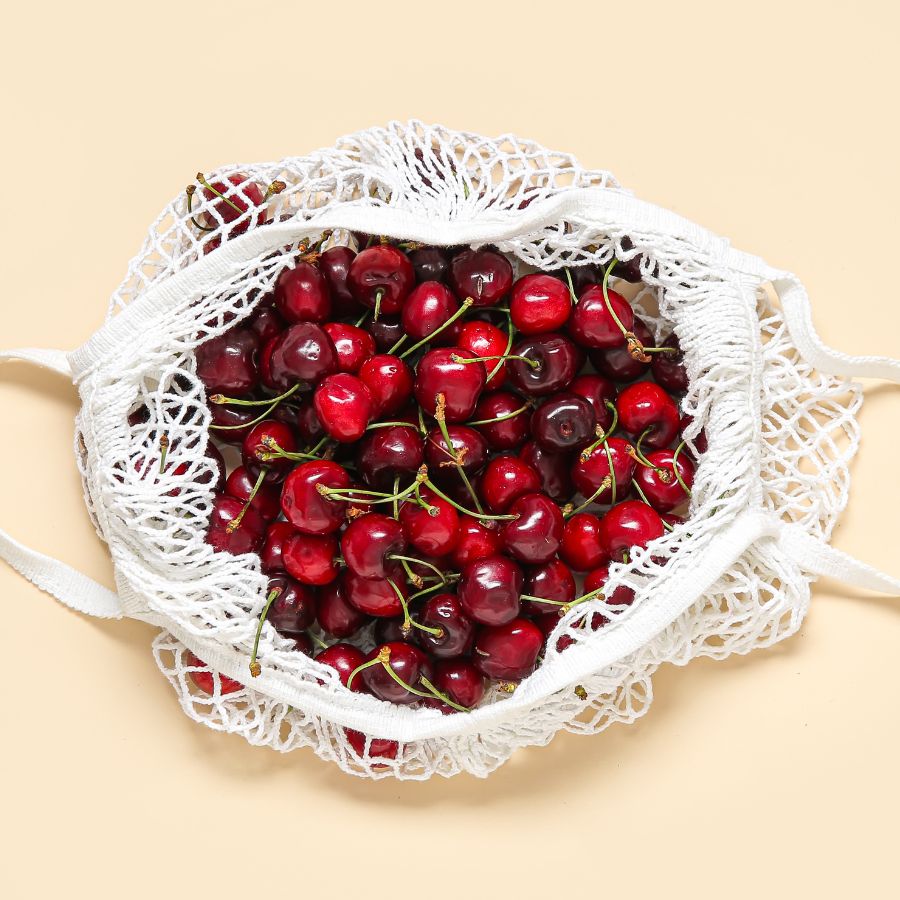
Rough handling can ruin even the most valuable forageables. Crushed mushrooms, wilted greens, and dirty roots lose both their appeal and their price.
Use baskets or mesh bags to keep things from getting smashed and let air circulate. Keeping everything cool and clean helps your harvest stay fresh and look better for longer.
This is especially important for delicate items like wild roots and tubers that need to stay clean and intact.
Skipping Processing Steps
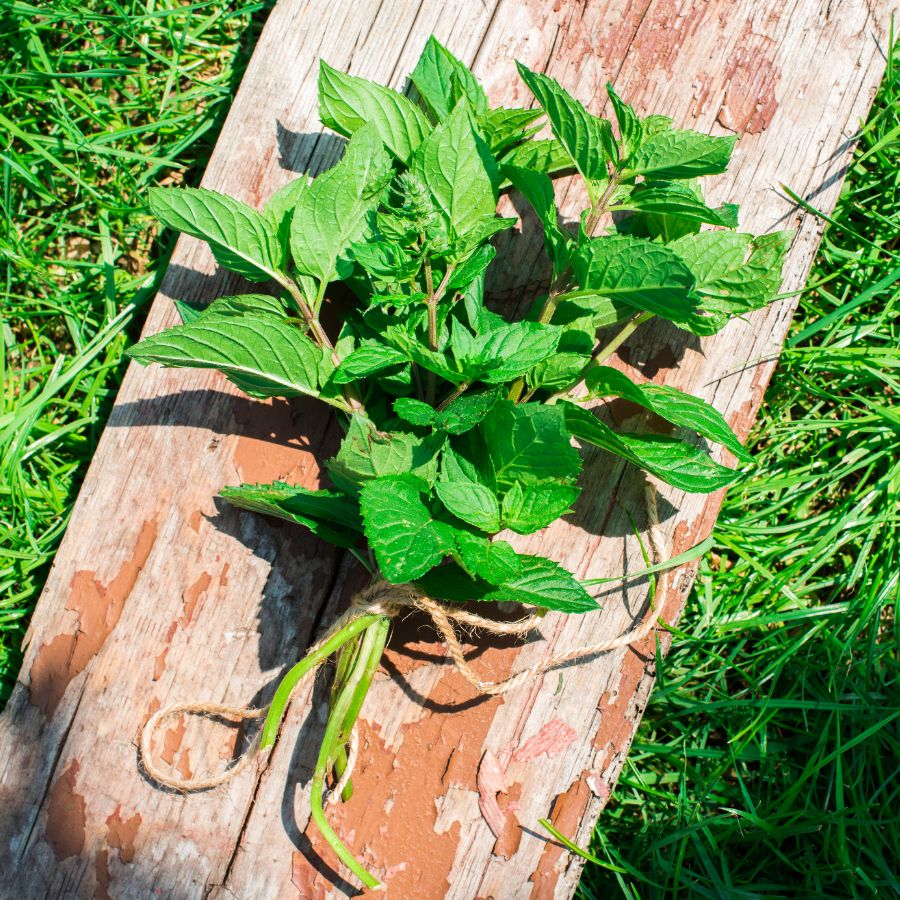
Skipping basic processing steps can cost you money. A raw harvest may look messy, spoil faster, or be harder to use.
For example, chaga is much more valuable when dried and cut properly. Herbs like wild mint or nettle often sell better when bundled neatly or partially dried. If you skip these steps, you may end up with something that looks unappealing or spoils quickly.
Collecting from the Wrong Area
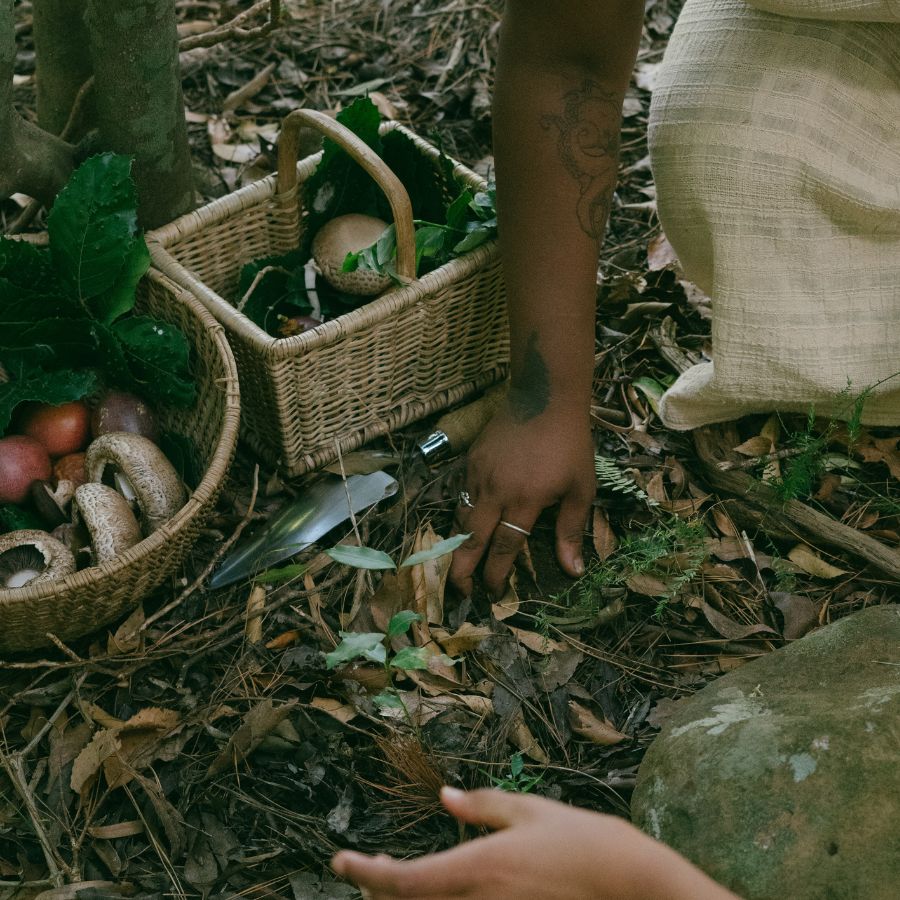
Harvesting in the wrong place can ruin a good find. Plants and mushrooms pulled from roadsides or polluted ground may be unsafe, no matter how fresh they look.
Buyers want to know their food comes from clean, responsible sources. If a spot is known for overharvesting or damage, it can make the whole batch less appealing.
These suburbia foraging tips can help you find overlooked spots that are surprisingly safe and productive.
Not Knowing the Market
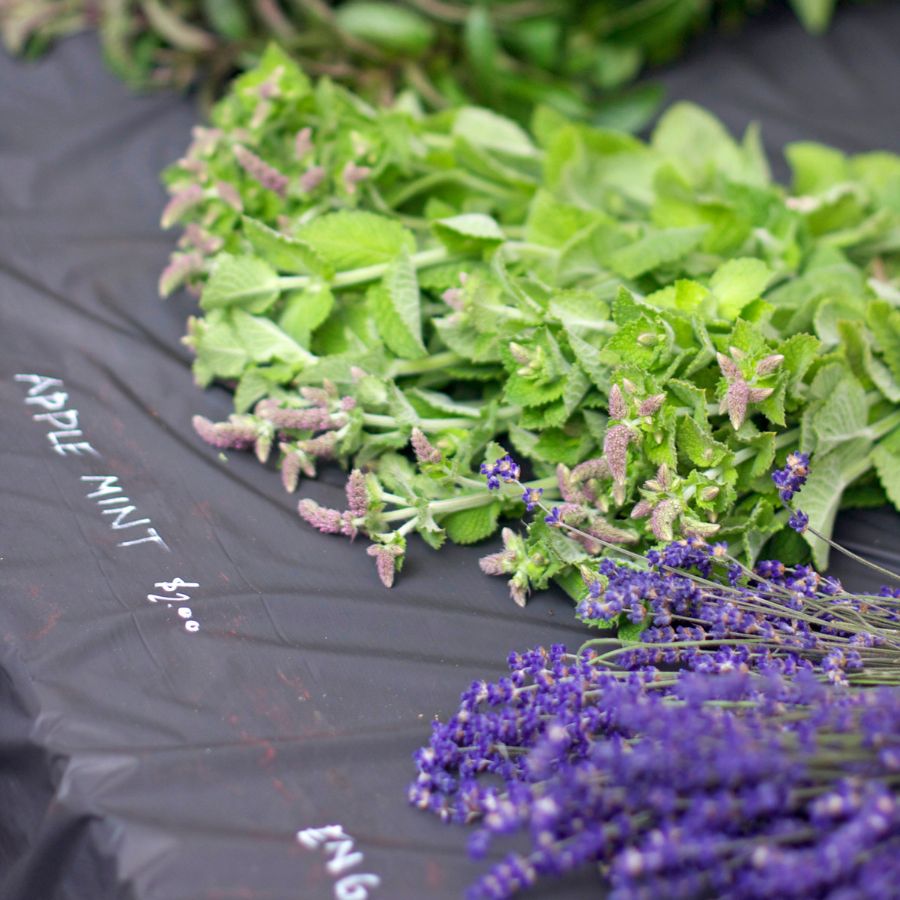
A rare plant isn’t valuable if nobody wants to buy it. If you gather in-demand species like wild ramps or black trumpets, you’re more likely to make a profit. Pay attention to what chefs, herbalists, or vendors are actually looking for.
Foraging with no plan leads to wasted effort and unsold stock. Keeping up with demand helps you bring home a profit instead of a pile of leftovers.
You can also brush up on foraging for survival strategies to identify the most versatile and useful wild foods.
Before you head out
Before embarking on any foraging activities, it is essential to understand and follow local laws and guidelines. Always confirm that you have permission to access any land and obtain permission from landowners if you are foraging on private property. Trespassing or foraging without permission is illegal and disrespectful.
For public lands, familiarize yourself with the foraging regulations, as some areas may restrict or prohibit the collection of mushrooms or other wild foods. These regulations and laws are frequently changing so always verify them before heading out to hunt. What we have listed below may be out of date and inaccurate as a result.
The Most Valuable Forageables in the State
Some of the most sought-after wild plants and fungi here can be surprisingly valuable. Whether you’re foraging for profit or personal use, these are the ones worth paying attention to:
Highbush Blueberry (Vaccinium corymbosum)
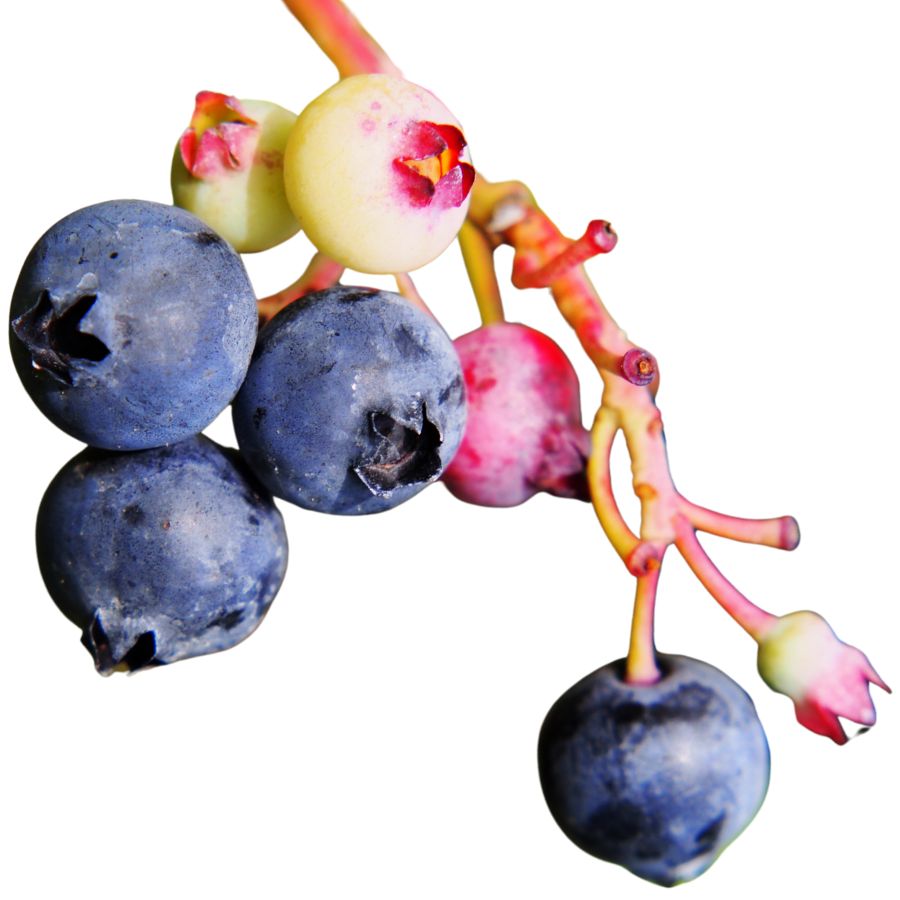
Highbush blueberries grow on shrubs that can reach several feet tall, producing clusters of round, deep blue fruit with a silvery bloom on the surface. The berries are sweet with a bit of tartness and have a firm, juicy texture that holds up well in baking.
The fruit is the only edible part; avoid the leaves and stems, which aren’t used in food and can cause stomach upset in large amounts. These berries freeze well and are commonly made into jams, pies, and sauces.
You might confuse them with berries from buckthorn or Virginia creeper, both of which are toxic and lack the characteristic waxy bloom and five-pointed crown at the berry’s base. Highbush blueberries always have that small crown, which is a key feature to double-check before eating.
Commercially, this plant is valuable due to its large yields and popularity in the food industry, with cultivated varieties generating millions in revenue annually. Even when foraged, the berries are a high-value find because they store well and are in demand.
Hickory Nut (Carya ovata)
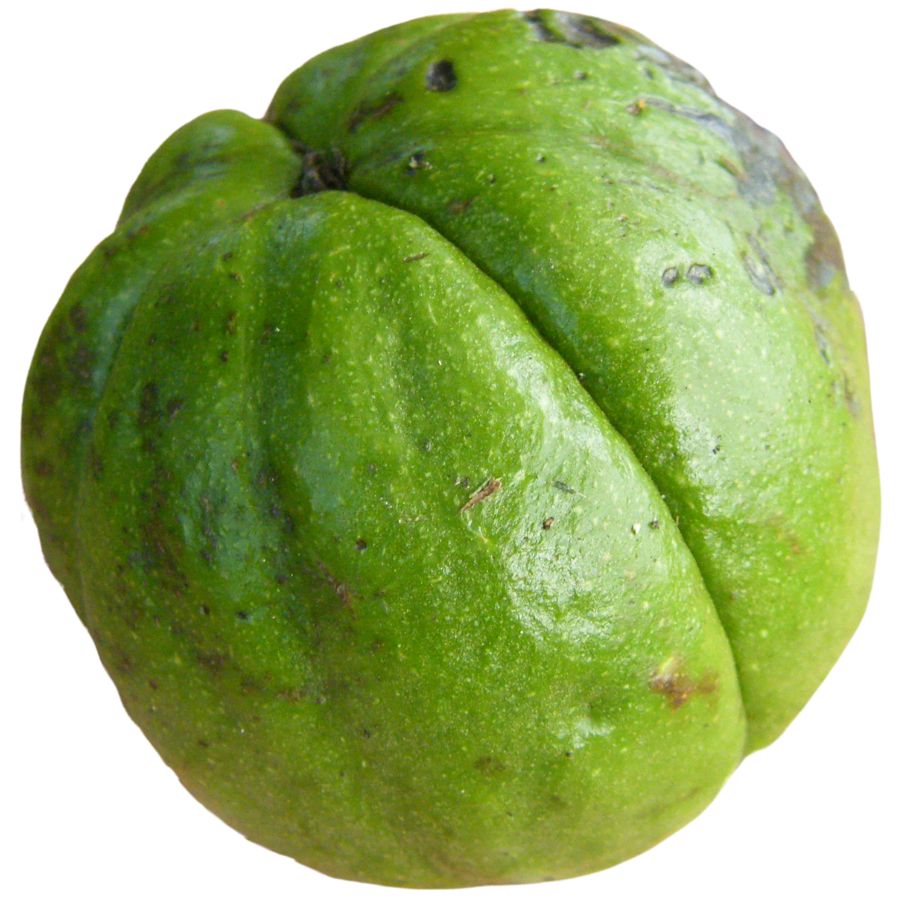
Hickory nuts grow inside a tough outer husk that splits open when the nut is ripe. The tree has compound leaves, and its bark can peel in long strips, especially on the shagbark variety.
The meat inside the nut is rich, sweet, and slightly oily, often compared to pecans but with a deeper flavor. It’s great raw, roasted, or ground into flour for use in traditional baking.
Bitternut hickories produce nuts that look similar but taste unpleasantly bitter and are not considered edible. You can usually tell them apart by the thinner shell and a more oblong shape.
Foragers value hickory nuts for their high energy content and long shelf life, especially after thorough drying. They’re time-consuming to crack, but the payoff can be worth it—shelled nutmeats often sell for premium prices in small-scale markets.
Black Walnut (Juglans nigra)
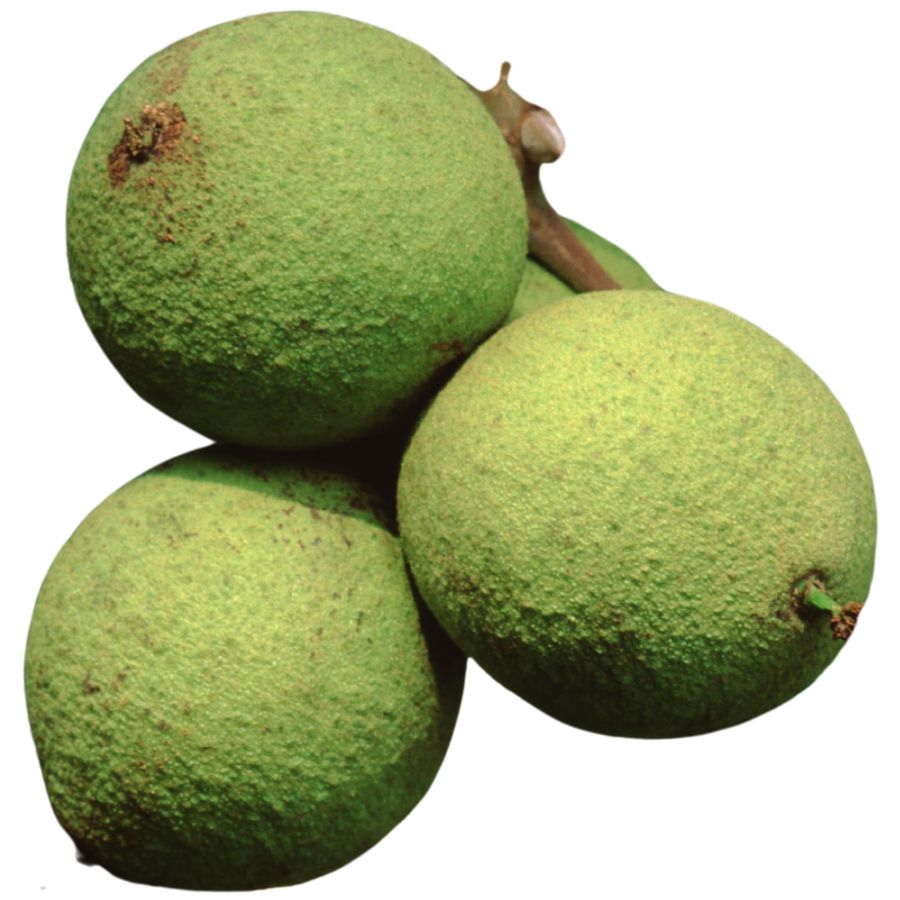
Black walnut grows a nut that’s prized for its strong, musky flavor and crunchy texture. The inner shell is extremely hard and often needs to be cracked with a vise or hammer to reach the oily, wrinkled seed inside.
Its nuts are most often roasted, chopped into desserts, or used in meat rubs and dressings. They’re also one of the few foraged tree nuts that can be stored long-term with very little processing.
The outer green husks leave a dark stain when bruised or broken open, and the nut itself is hidden inside a thick shell. While the fruit of the tree may resemble buckeye at first glance, black walnut leaves have a different shape and pattern, and buckeye seeds are toxic.
Prices stay high because harvesting takes time and experience, and the trees don’t lend themselves easily to large-scale production. Foragers and specialty food makers often pay a premium for wild black walnuts with intense flavor.
Jerusalem Artichoke (Helianthus tuberosus)
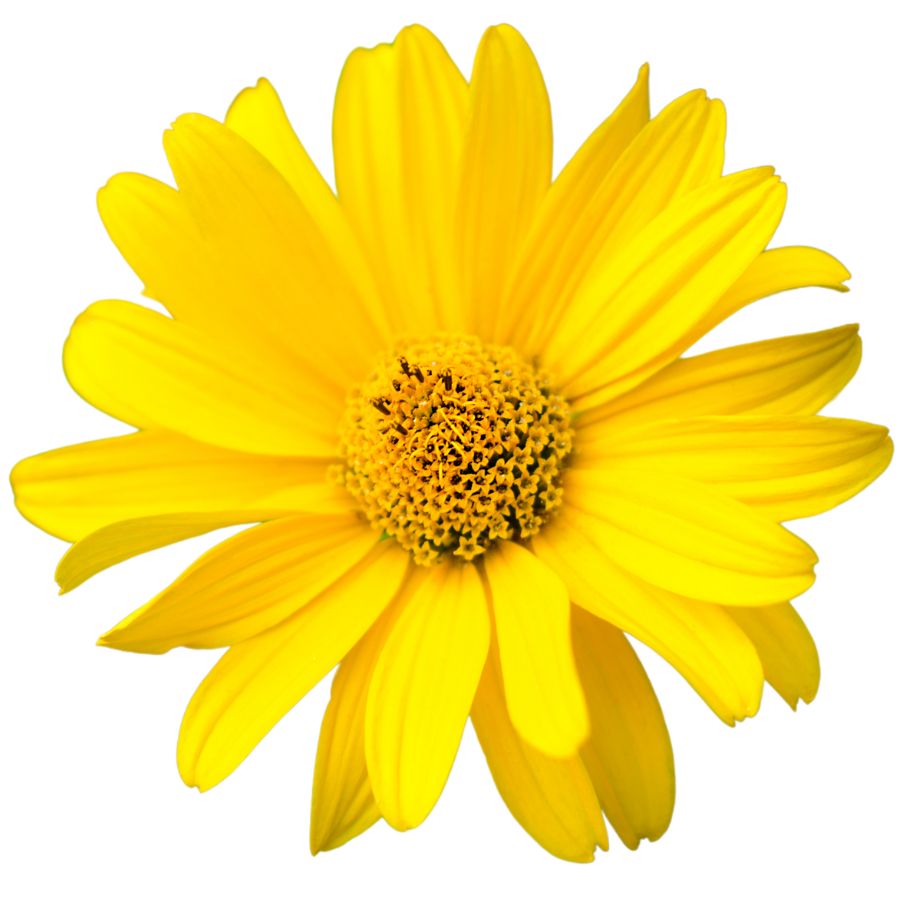
The Jerusalem artichoke is a sunflower relative that grows tall with bright yellow blooms and knobby, potato-like tubers underground. Its underground part is what you eat, while the stems, leaves, and flowers are best left alone.
What makes the tubers interesting is their crisp texture when raw and a nutty, slightly sweet flavor when cooked. They’re often roasted, pureed into soups, or sliced thin for chips.
Some wild sunflowers can look similar, but they don’t form the same type of tubers. If you’re not digging up a bumpy, tan root shaped like ginger, you’re not looking at the right plant.
People value Jerusalem artichokes for their culinary versatility and as a low-starch alternative to potatoes. They sell for a decent price at specialty grocers and farmers markets, especially when freshly dug.
Pawpaw (Asimina triloba)
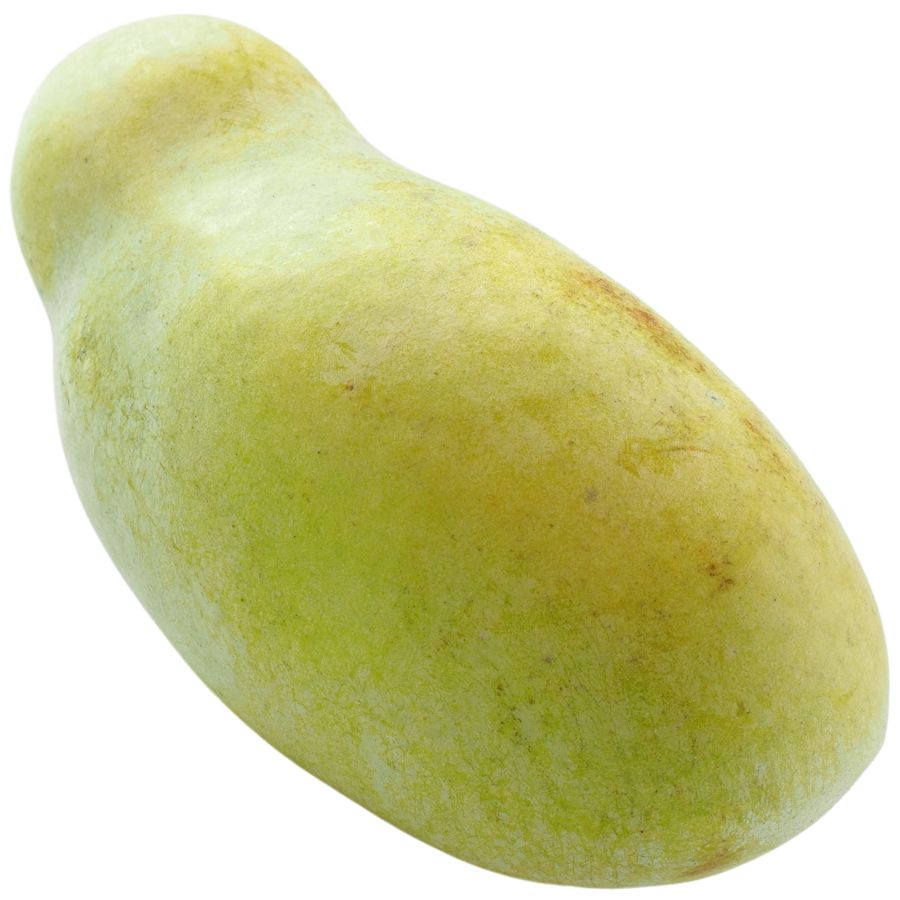
Pawpaw produces a green, mango-shaped fruit with soft yellow flesh inside and a taste that’s hard to forget. The flavor is rich and tropical, and the texture is thick like custard.
You’ll want to avoid the seeds and skin, but the pulp is edible and highly sought after. Some people cook it down into jams while others prefer it raw, straight from the peel.
There are other fruits in wooded areas that look similar, but pawpaw’s smell and size help separate it from anything potentially inedible. The way its fruits grow in clusters is also a giveaway.
Pawpaw isn’t commonly found in grocery stores, which makes it valuable for small growers and foragers. In-season, it can fetch a premium price at specialty food shops and farmers markets.
Wild Garlic (Allium vineale)
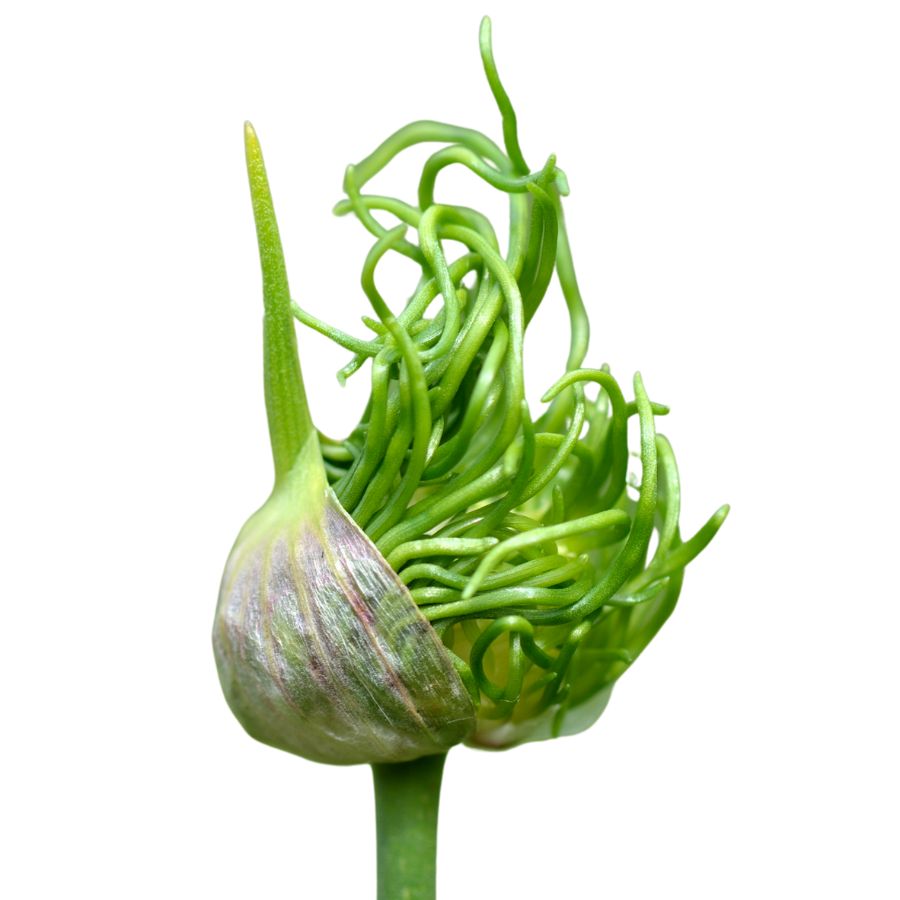
When you come across wild garlic, you’ll notice it by its slender, hollow leaves and the strong onion-like scent it gives off when crushed. Its bulbs and leaves are edible, with a flavor that’s sharper than cultivated garlic.
One important thing to watch out for is the resemblance to some toxic lookalikes, like death camas, which lacks the distinctive garlic smell. Always crush a leaf before collecting to check for that unmistakable odor.
In the kitchen, wild garlic is often used fresh in pestos or sautés, and the bulbs can be pickled or roasted. The leaves have a tender texture and a pungent bite, making them useful in any dish that benefits from a punch of garlic flavor.
Wild garlic has limited market value because it’s considered invasive in many regions. Still, it holds practical value for foragers who want a fresh, wild seasoning right from the ground.
Wild Bergamot (Monarda fistulosa)
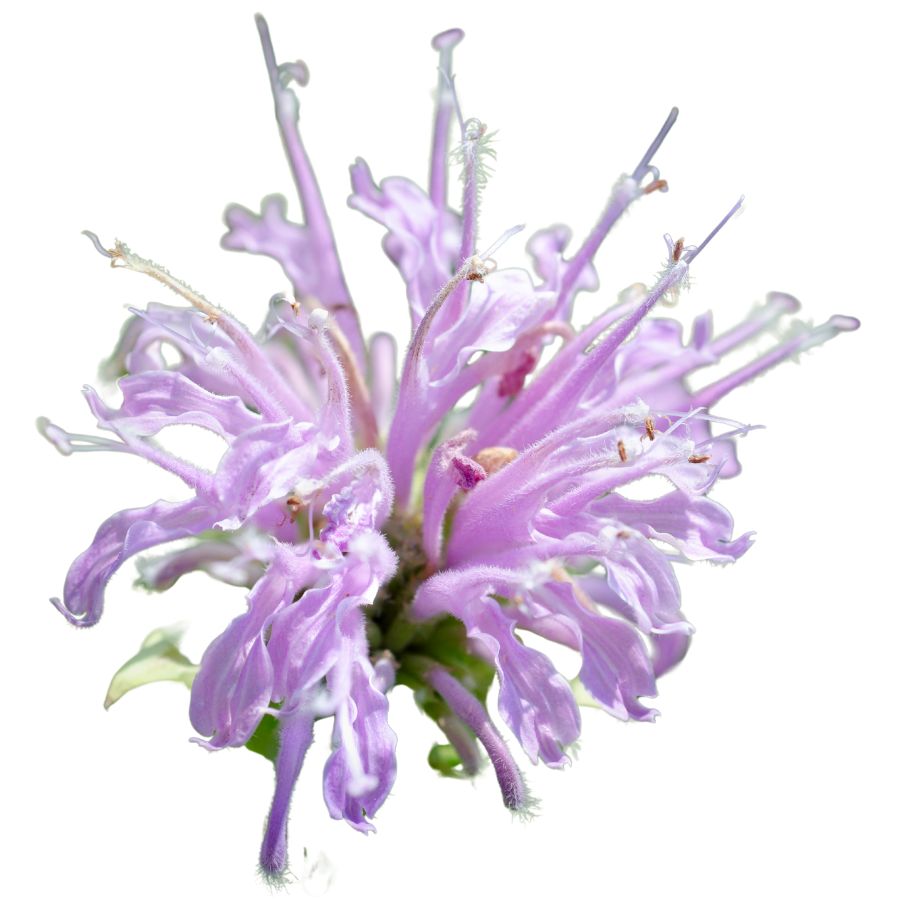
Wild bergamot, which also goes by names like bee balm and Oswego tea, has pale purple flowers that grow in tufted whorls and smell strongly when touched. The square stems and opposite leaves are a good indicator that you’re looking at a plant in the mint family.
The flavor is a mix of thyme and mint, and the texture is slightly coarse, especially when raw. People often use the flowers and leaves fresh in teas or dry them to store in jars.
It’s important to avoid confusing it with similar-looking mints that don’t have the same taste or safe track record. Some varieties of mountain mint, for example, have sharper scents and can cause digestive upset in larger amounts.
Even though it’s not a high-dollar herb, wild bergamot is valuable because of how much flavor you can get from just a few dried petals or leaves. That strong taste also means you don’t need much, which makes it last longer in the pantry.
Morel Mushroom (Morchella esculenta)
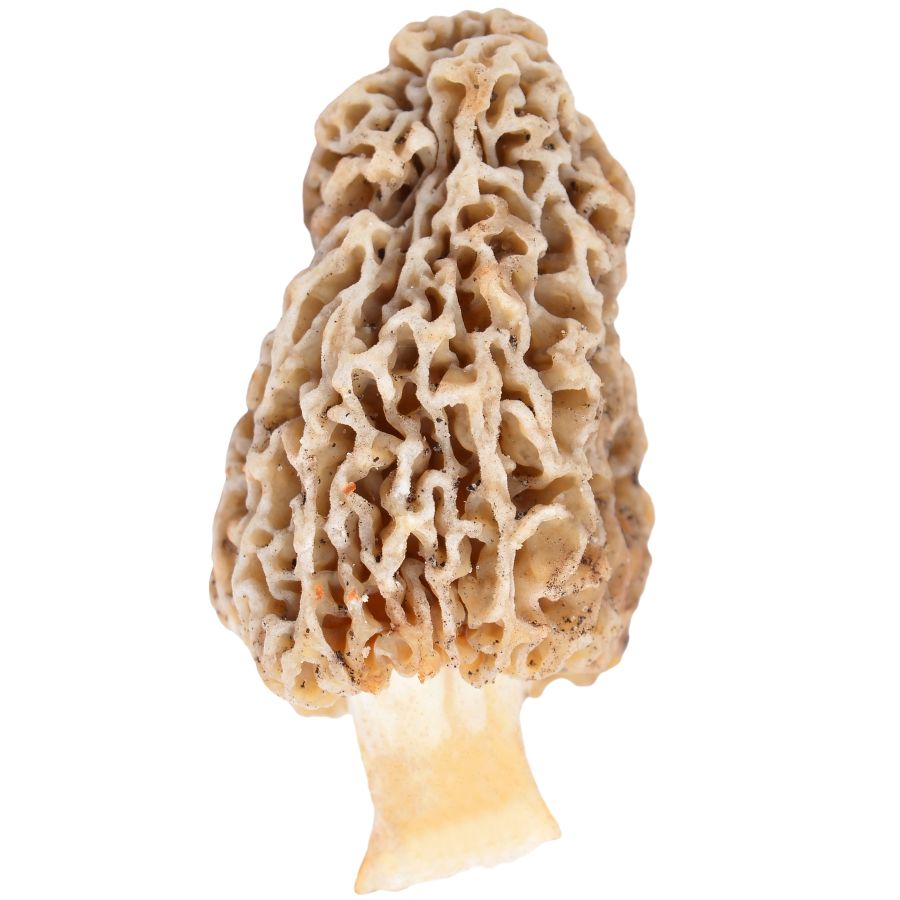
Morel mushrooms have a honeycomb-like surface with deep pits and ridges. The cap is fully attached to the stem, which helps set them apart from dangerous lookalikes like false morels that often have wrinkled, lobed caps and loose or cottony interiors.
The rich, nutty flavor and slightly chewy texture make morels a favorite in high-end kitchens. Many people sauté them in butter, stuff them, or dry them for later use because they hold their flavor extremely well.
Always cook morels thoroughly because raw ones can cause stomach upset, even when they look perfectly normal.
Morels are highly prized by chefs and home cooks, sometimes selling for over $50 per pound fresh and even more when dried.
Part of what makes morels so valuable is how hard they are to cultivate and find. They often grow in specific, unpredictable places, and their short harvesting window drives up both the demand and the price.
American Plum (Prunus americana)
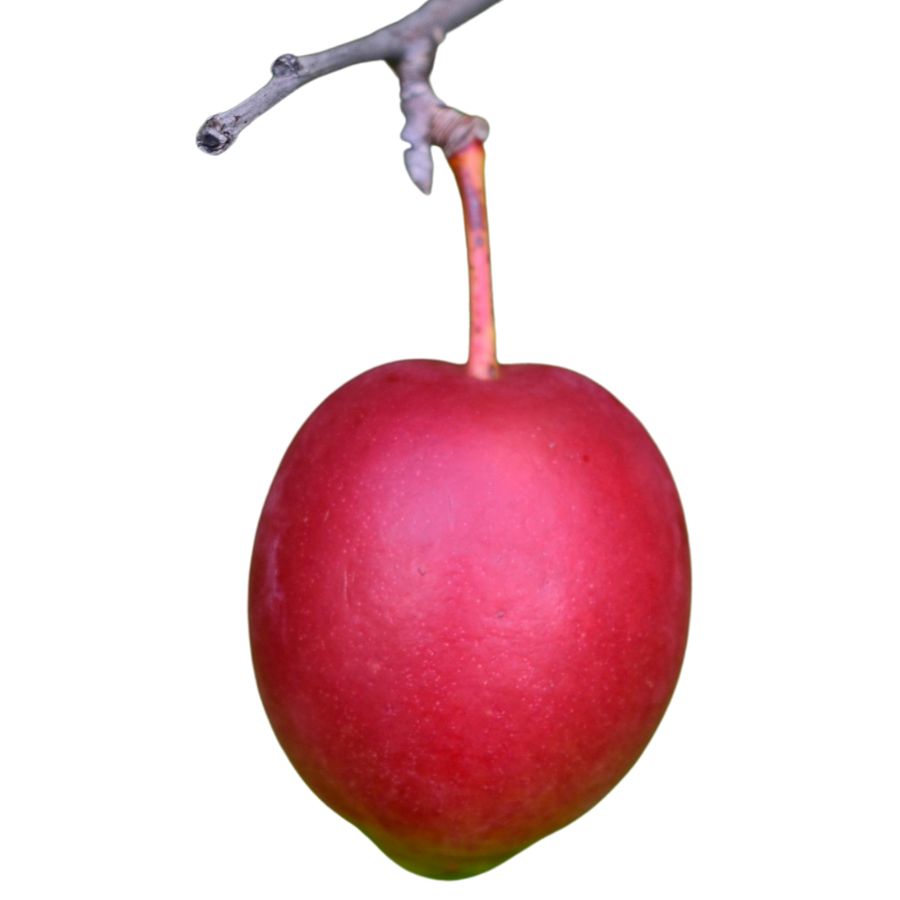
American plums grow on small trees and produce fruit that ranges from deep red to bluish-purple with a waxy coating. The skin is tart and a little astringent, but the flesh inside is sweet, soft, and juicy when fully ripe.
You can eat the fruit fresh, but it’s more often cooked down into jelly, jam, or syrup. The pits are not edible and should always be discarded.
Some cherry species grow in similar clusters, but cherries tend to be smaller, rounder, and darker with smoother bark. American plum leaves also have a rough texture that helps separate them from other lookalikes.
These plums are valuable in small markets, especially when turned into preserves or wine. Individual trees can yield a good harvest, but the fruit is delicate and doesn’t store long.
Chicken of the Woods (Laetiporus sulphureus)
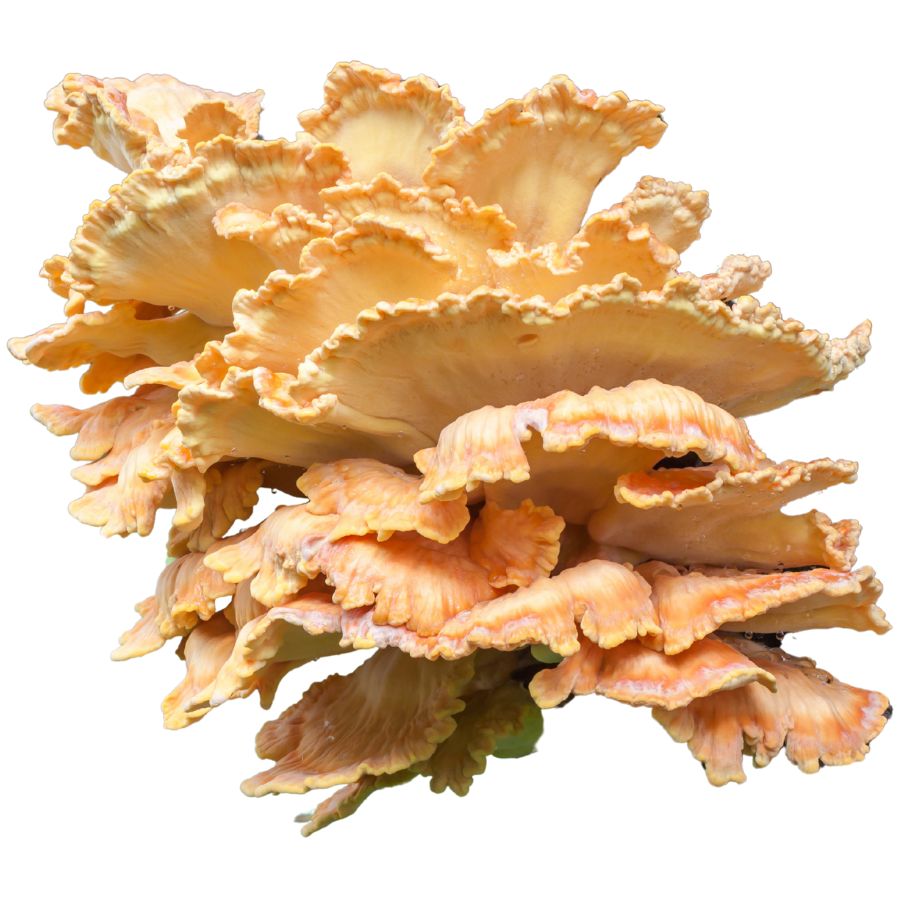
Chicken of the woods, also called sulfur shelf, grows in thick, shelf-like clusters with bright orange tops and yellow undersides. It develops on hardwood trees and fallen logs, forming a dense and slightly spongy mass.
Only the soft outer edges are typically eaten, while the older inner parts become tough and unpleasant. Its texture is meaty and chewy, and many people say it tastes a lot like chicken.
This mushroom doesn’t have gills and instead features tiny pores underneath, which helps separate it from toxic lookalikes like the jack-o’-lantern mushroom. The jack-o’-lantern has gills and glows faintly in the dark, which chicken of the woods does not.
Chicken of the woods is often sautéed, fried, or frozen for later, and can fetch a decent price at markets when fresh and tender. Just be careful—some people have reported mild stomach upset, especially when it’s harvested from conifers.
Persimmon (Diospyros virginiana)
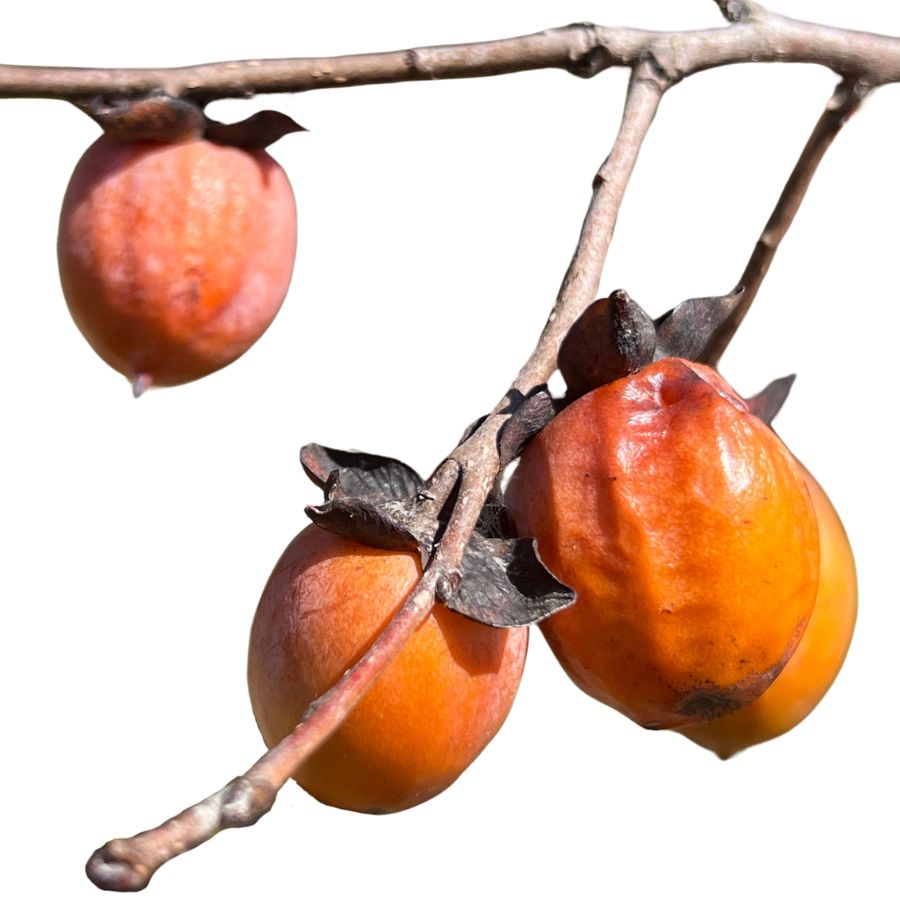
Persimmon fruit has a round shape and orange skin, usually with a slightly pointed end and a leafy cap still attached. It’s easy to bite into a ripe one and find it meltingly soft, with a flavor that’s both sugary and floral.
People sometimes confuse it with wild tomato-like fruits, but persimmons grow on hardwood trees and the fruit has a firmer skin. Avoid eating them when firm and unripe, as they contain tannins that cause a strong puckering sensation.
The pulp is the part most commonly used, and it’s great in baked goods or even frozen into a simple sorbet. Some cooks mash it into jam or dehydrate slices for a chewy snack.
Wild persimmons are valuable more for their flavor than for any consistent market price, though foragers and specialty sellers often get a few dollars per pound. The rich taste and the tree’s ability to grow in various soils make this fruit worth the effort to find.
Daylily (Hemerocallis fulva)
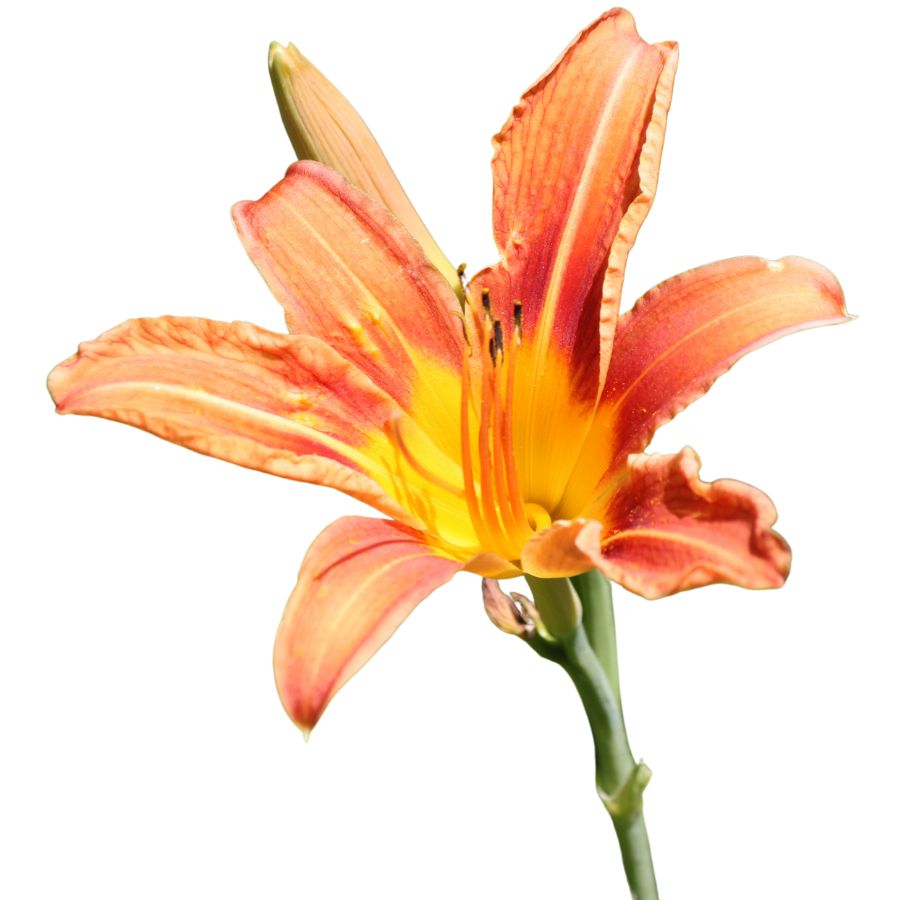
The daylily is a bright orange flower with long, sword-shaped leaves that grows in clumps and sends up tall flowering stalks. It looks similar to some toxic lilies, but true daylilies have thick, fleshy roots and grow multiple flowers from a single stalk.
You can eat the buds, flowers, young shoots, and tuber-like roots, but the buds and flowers are the most commonly used. The petals have a crisp, slightly sweet flavor when raw, and they’re often stir-fried or added to soups.
Some people experience digestive issues from eating large amounts of raw daylily, so it’s best to try a small portion first. Avoid confusing it with similar-looking lilies like tiger lily or Easter lily, which are not safe to eat.
The flowers are sometimes sold dried in Asian markets and used in traditional dishes, giving them modest value in the specialty food world. Because several parts of the plant are edible and have distinct culinary uses, it’s a popular foraged food.
Cattail (Typha latifolia)
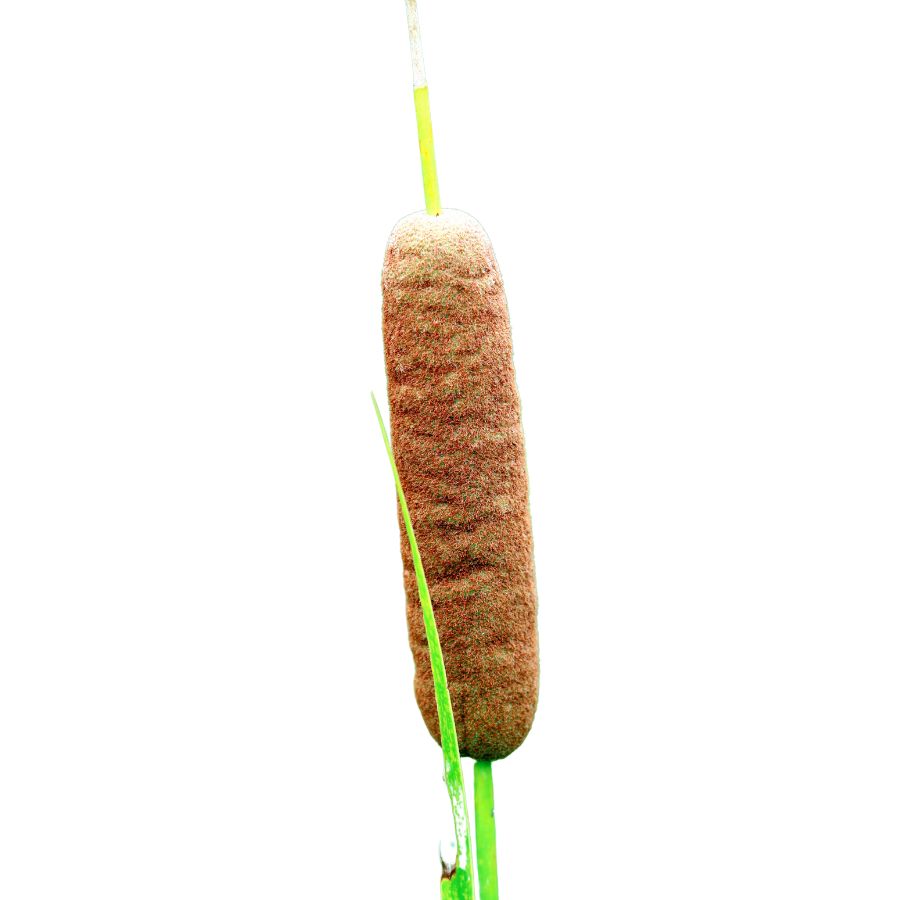
Cattails grow tall in shallow water and feature long, narrow leaves with brown, sausage-like flower heads that help identify them. You can eat the tender shoots, the young green flower spikes, and the starchy rhizomes underground.
The shoots are often compared to cucumbers or hearts of palm and can be used raw in salads. The flower spikes are more enjoyable when steamed or boiled before they toughen.
Rhizomes have more calories than the rest of the plant, but they’re fibrous and need to be cooked or processed into flour to be useful. Avoid picking anything that looks similar but lacks the brown flower head—iris and other lookalikes can be harmful if ingested.
Cattails aren’t sold for much commercially, but their abundance and the number of usable parts make them a solid wild food source. Foragers value them for how much food they provide from one plant, even if they won’t fetch a high price.
Oyster Mushroom (Pleurotus ostreatus)
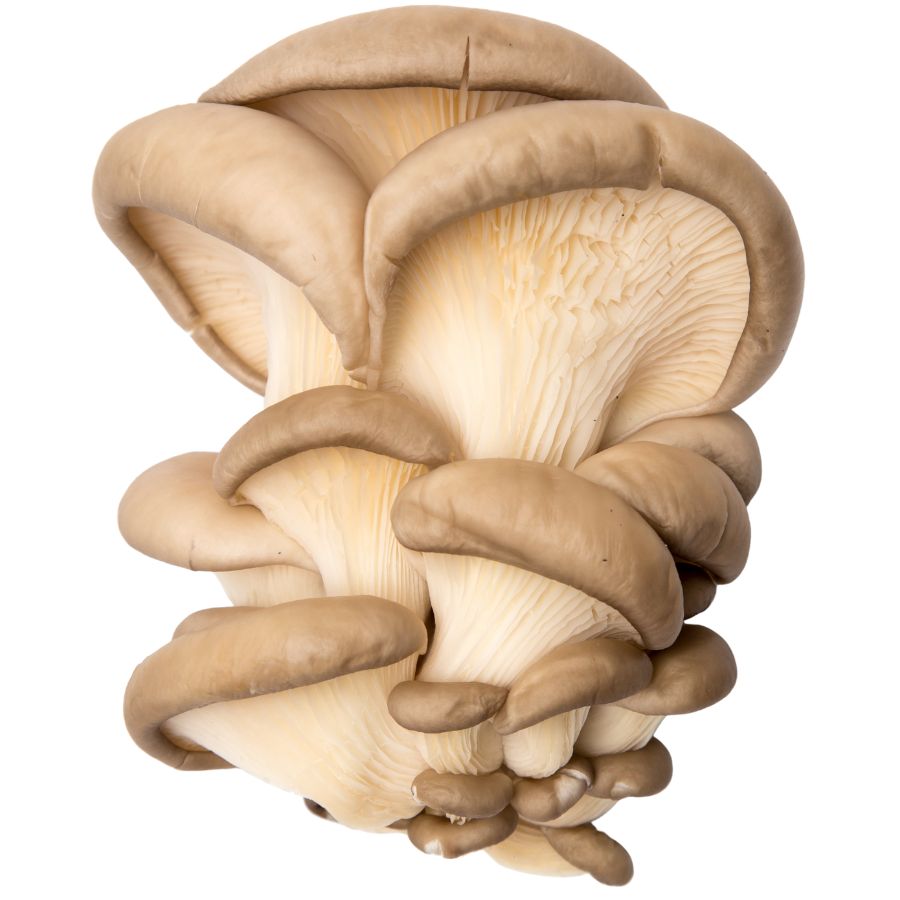
Look for oyster mushrooms growing directly out of logs or stumps, forming overlapping clusters of pale, fluted caps with white gills that stretch downward. The cap shape is typically rounded like a fan or an oyster shell, with a smooth, soft texture.
These mushrooms are completely edible except for any tough or fibrous sections near the base. When cooked, they have a mild, savory flavor and absorb sauces well, making them ideal for stir-fries, pasta, and soups.
They can be confused with toxic lookalikes like the false oyster, which has darker gills and a tougher consistency, or the jack-o’-lantern, which is bright orange and grows from the ground. Checking the substrate—wood only—is one of the easiest ways to avoid mistakes.
Fresh oyster mushrooms usually sell for $10–$20 per pound fresh depending on variety and quality. Their value comes not only from taste and versatility but also from a short shelf life that keeps them in demand from local growers.
Chanterelle Mushroom (Cantharellus cibarius)
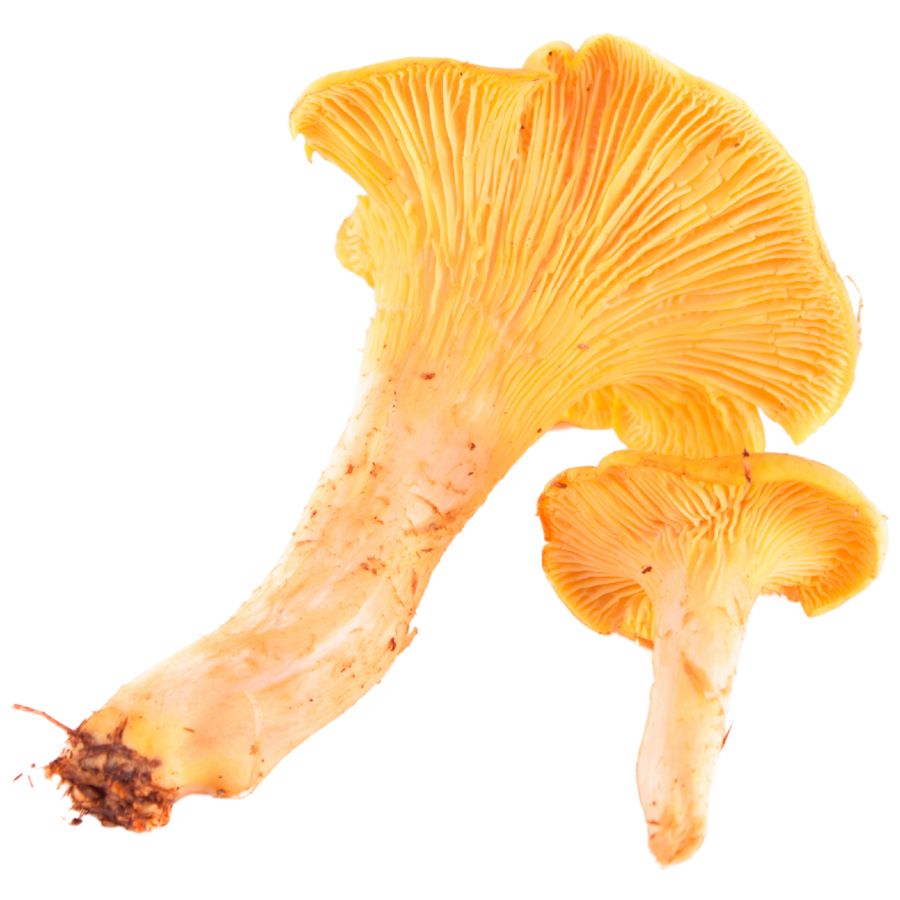
Golden chanterelles, also called egg mushrooms or girolles, are funnel-shaped and usually a bright yellow-orange with false gills that appear as deep, forked wrinkles. They have a fruity smell, almost like apricots, and a dense, meaty texture when cooked.
The part you want is the whole cap and stem, both of which soften nicely in butter or cream-based dishes. Their flavor is rich and peppery, which makes them popular in risottos, sautés, and soups.
A common lookalike is the jack-o’-lantern mushroom, which glows faintly in the dark and has true gills instead of shallow ridges. That one will give you stomach cramps, so pay close attention to the gill structure and color.
Fresh chanterelles can sell for over $20 per pound at farmers markets and restaurants, especially when demand is high. Their shelf life is short, but you can extend it by drying or pickling them soon after harvest.
Serviceberry (Amelanchier canadensis)
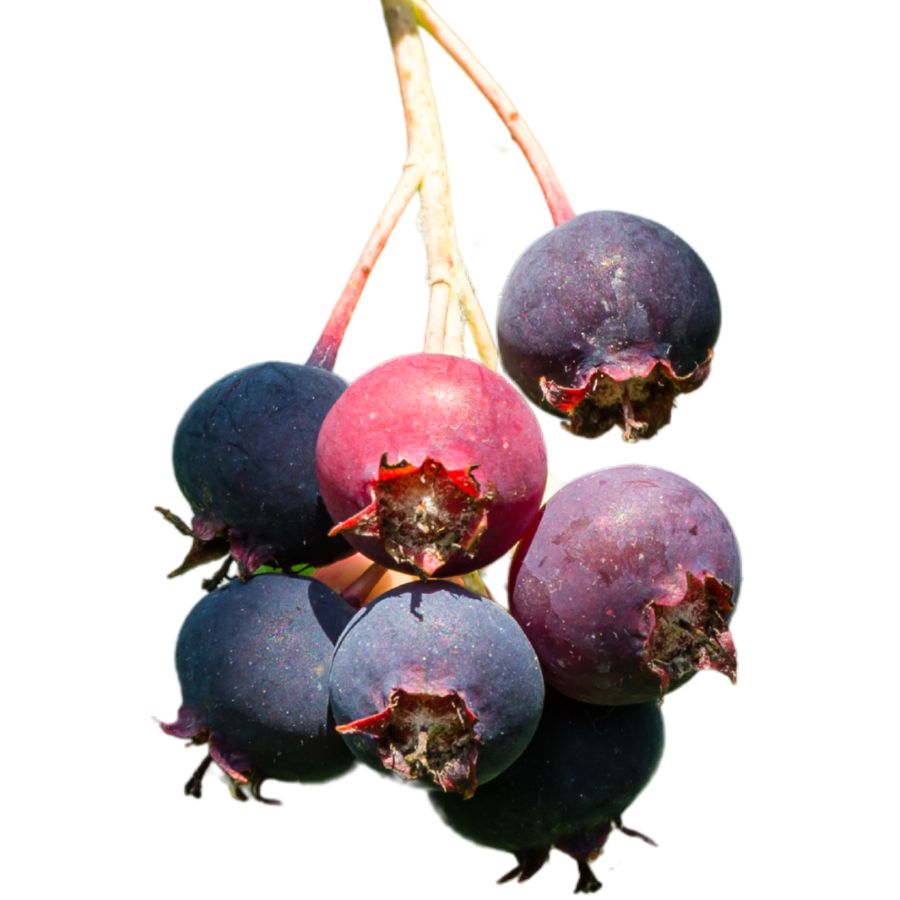
The fruit of serviceberry, also called shadbush or juneberry, looks like a small, purple-blue blueberry with a crown at the tip. It grows on a tall shrub or small tree with oval leaves and smooth gray bark.
You can eat the fruit raw, but it’s also cooked down into syrups, pies, and jellies because of its mild sweetness and soft texture. The taste is often compared to a mix of blueberry and almond.
Some people confuse serviceberry with chokecherry or buckthorn, but serviceberry fruits grow singly or in small clusters, not in long bunches, and the plant has no thorns. Its leaves are finely toothed and not serrated like chokecherry’s.
The fruit has a short shelf life when fresh, but it freezes well and dries into chewy, raisin-like bites. Dried serviceberries were valuable in trade and traditional foodways, and the fresh fruit can still fetch up to $15 per pound at markets.
Red Raspberry (Rubus idaeus)
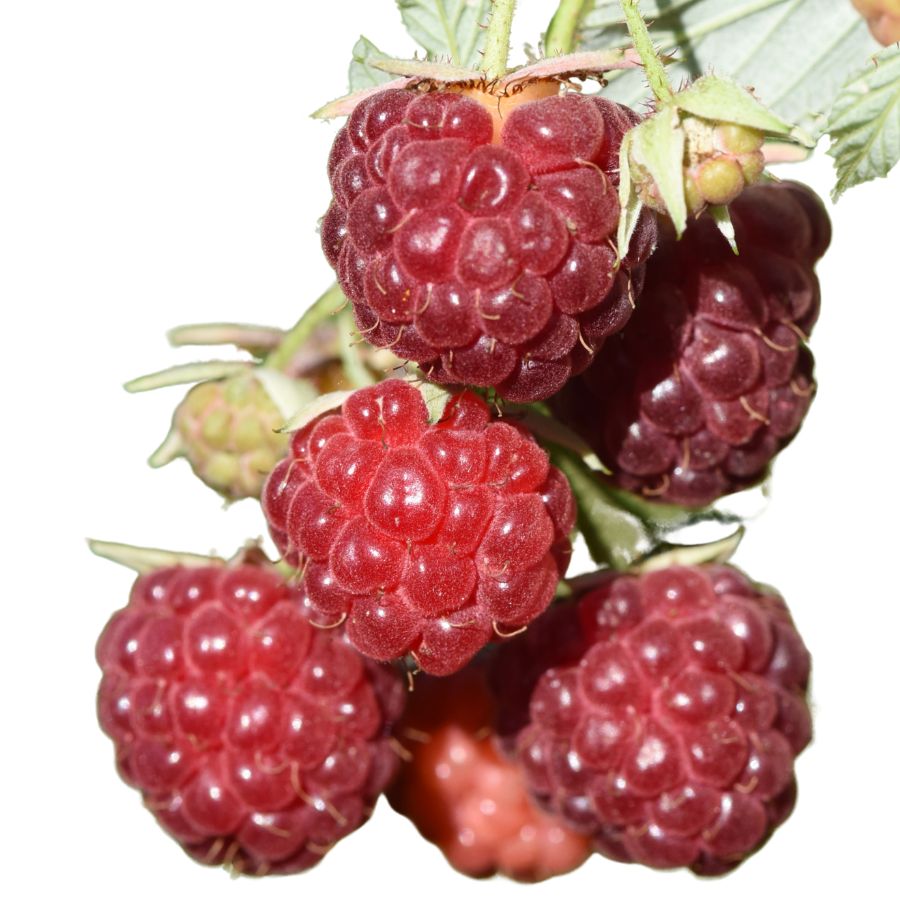
You’ll recognize red raspberries by their soft red drupelets and their hollow shape when picked. The canes are covered in fine prickles, and the leaves are toothed and pale underneath.
People usually eat the berries fresh or turn them into jams, syrups, or desserts. The leaves aren’t edible and are often ignored entirely.
Red raspberries can be mistaken for wineberries, which are more translucent and sticky. Another common mix-up is with black raspberries, which have a solid core and darker color.
They aren’t rare, but they’re still considered a premium fruit in local food markets and can be profitable in small harvests. Their delicate texture makes them harder to store or ship, which adds to their market appeal.
Wineberry (Rubus phoenicolasius)
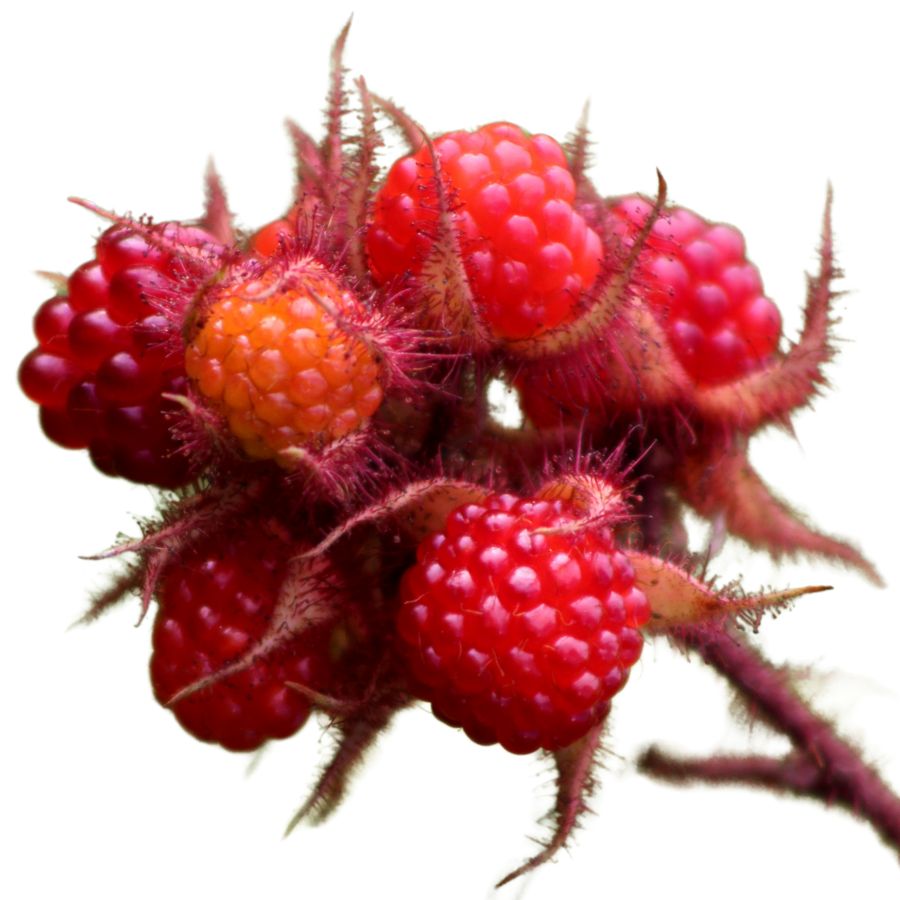
Japanese wineberries have red-orange fruit enclosed in a sticky, hairy calyx before they ripen. When opened, the fruit looks like a raspberry but is glossier and slightly more tart.
They’re often confused with red raspberries and dewberries, but wineberries grow on arching canes with bright red fuzz and have distinct sticky hairs around the buds. Dewberries trail along the ground while wineberry plants grow upright, and red raspberries lack the same reddish fuzz.
People usually eat just the berries, which are too soft to sell widely but ideal for small-batch preserves and baking. The berries are valued for their bright flavor and intense color, which holds up nicely in sauces and jams.
They taste sweet with a tangy edge and burst in your mouth with soft flesh and small seeds. The rest of the plant has no common culinary use, and the stems and leaves shouldn’t be eaten.
Maitake (Grifola frondosa)
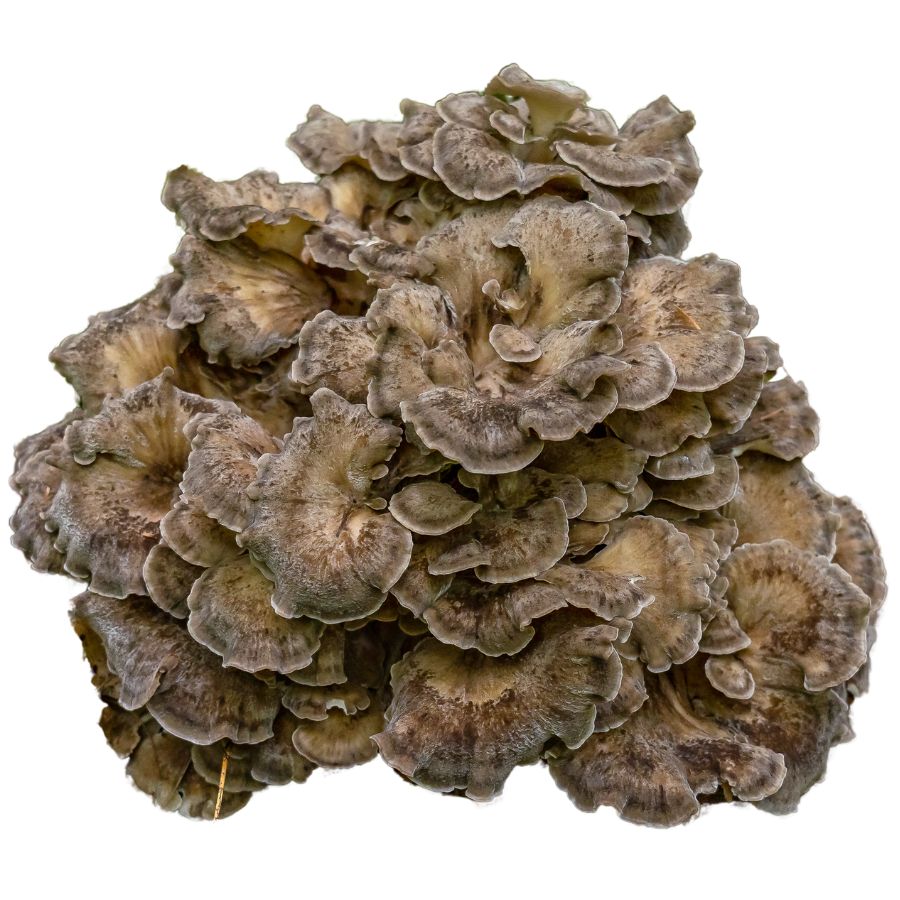
If you’ve ever found a large, leafy-looking mushroom near the base of an oak tree, it might’ve been maitake, also called hen of the woods. The lobes are soft, fan-shaped, and usually grow in a layered cluster that looks like brown petals.
Its flavor is strong and savory, and people often roast or fry it to bring out its concentrated taste. It’s firm when cooked, not spongy, and works well in grain bowls, stews, or simply on its own.
The whole fruiting body is edible, but the base can be fibrous and tough, so most people trim that part away.
While maitake does have a few lookalikes, like the umbrella polypore, most of them are thicker and less delicate in texture.
Fresh wild maitake can fetch high prices at specialty markets, and its shelf life improves dramatically when dehydrated. For those who forage or cook professionally, it’s one of the more valuable mushrooms to find.
Where to Find Valuable Forageables in the State
Some parts of the state are better than others when it comes to finding valuable wild plants and mushrooms. Here are the different places where you’re most likely to have luck:
| Plant | Locations |
| Highbush Blueberry (Vaccinium corymbosum) | – Savage River State Forest – Garrett State Forest – Swallow Falls State Park |
| Hickory Nut (Carya ovata) | – Patapsco Valley State Park – Green Ridge State Forest – Glen Arboretum, Towson University |
| Black Walnut (Juglans nigra) | – Catoctin Mountain Park – Gunpowder Falls State Park – Glen Arboretum, Towson University |
| Jerusalem Artichoke (Helianthus tuberosus) | – Patuxent Research Refuge – C&O Canal National Historical Park – Susquehanna State Park |
| Pawpaw (Asimina triloba) | – C&O Canal National Historical Park – Patuxent River State Park – Seneca Creek State Park |
| Wild Garlic (Allium vineale) | – Patapsco Valley State Park – Gunpowder Falls State Park – Baltimore City Parks |
| Wild Bergamot (Monarda fistulosa) | – Soldiers Delight Natural Environment Area – Patuxent Research Refuge – Assateague Island National Seashore |
| Morel Mushroom (Morchella esculenta) | – Patapsco Valley State Park – Gambrill State Park – Catoctin Mountain Park |
| American Plum (Prunus americana) | – Green Ridge State Forest – Susquehanna State Park – C&O Canal National Historical Park |
| Chicken of the Woods (Laetiporus sulphureus) | – Patapsco Valley State Park – Gunpowder Falls State Park – Seneca Creek State Park |
| Persimmon (Diospyros virginiana) | – Catoctin Mountain Park – Patuxent River State Park – Susquehanna State Park |
| Daylily (Hemerocallis fulva) | – Patapsco Valley State Park – Gunpowder Falls State Park – C&O Canal National Historical Park |
| Cattail (Typha latifolia) | – Blackwater National Wildlife Refuge – Jug Bay Wetlands Sanctuary – Patuxent Research Refuge |
| Oyster Mushroom (Pleurotus ostreatus) | – Patapsco Valley State Park – Gunpowder Falls State Park – Catoctin Mountain Park |
| Chanterelle Mushroom (Cantharellus cibarius) | – Green Ridge State Forest – Savage River State Forest – Patuxent River State Park |
| Serviceberry (Amelanchier canadensis) | – Catoctin Mountain Park – Patuxent Research Refuge – Assateague Island National Seashore |
| Red Raspberry (Rubus idaeus) | – Gunpowder Falls State Park – Savage River State Forest – Catoctin Mountain Park |
| Wineberry (Rubus phoenicolasius) | – Patapsco Valley State Park – Gunpowder Falls State Park – C&O Canal National Historical Park |
| Maitake (Grifola frondosa) | – Patapsco Valley State Park – Gunpowder Falls State Park – Catoctin Mountain Park |
When to Forage for Maximum Value
Every valuable wild plant or mushroom has its season. Here’s a look at the best times for harvest:
| Plants | Valuable Parts | Best Harvest Season |
| Highbush Blueberry (Vaccinium corymbosum) | Berries | July – August |
| Hickory Nut (Carya ovata) | Nuts | September – October |
| Black Walnut (Juglans nigra) | Nuts | September – October |
| Jerusalem Artichoke (Helianthus tuberosus) | Tubers | October – March |
| Pawpaw (Asimina triloba) | Fruit | September |
| Wild Garlic (Allium vineale) | Leaves, bulbs | March – May |
| Wild Bergamot (Monarda fistulosa) | Leaves, flowers | June – August |
| Morel Mushroom (Morchella esculenta) | Fruiting bodies (mushrooms) | April – May |
| American Plum (Prunus americana) | Fruit | August – September |
| Chicken of the Woods (Laetiporus sulphureus) | Fruiting bodies (mushrooms) | August – October |
| Persimmon (Diospyros virginiana) | Fruit | October – November |
| Daylily (Hemerocallis fulva) | Buds, flowers, tubers | May – July |
| Cattail (Typha latifolia) | Shoots, pollen, roots | April – June (shoots), June – July (pollen), October – March (roots) |
| Oyster Mushroom (Pleurotus ostreatus) | Fruiting bodies (mushrooms) | October – April |
| Chanterelle Mushroom (Cantharellus cibarius) | Fruiting bodies (mushrooms) | July – September |
| Serviceberry (Amelanchier canadensis) | Berries | June |
| Red Raspberry (Rubus idaeus) | Berries | June – July |
| Wineberry (Rubus phoenicolasius) | Berries | July |
| Maitake (Grifola frondosa) | Fruiting bodies (mushrooms) | September – November |
One Final Disclaimer
The information provided in this article is for general informational and educational purposes only. Foraging for wild plants and mushrooms involves inherent risks. Some wild plants and mushrooms are toxic and can be easily mistaken for edible varieties.
Before ingesting anything, it should be identified with 100% certainty as edible by someone qualified and experienced in mushroom and plant identification, such as a professional mycologist or an expert forager. Misidentification can lead to serious illness or death.
All mushrooms and plants have the potential to cause severe adverse reactions in certain individuals, even death. If you are consuming foraged items, it is crucial to cook them thoroughly and properly and only eat a small portion to test for personal tolerance. Some people may have allergies or sensitivities to specific mushrooms and plants, even if they are considered safe for others.
Foraged items should always be fully cooked with proper instructions to ensure they are safe to eat. Many wild mushrooms and plants contain toxins and compounds that can be harmful if ingested.

